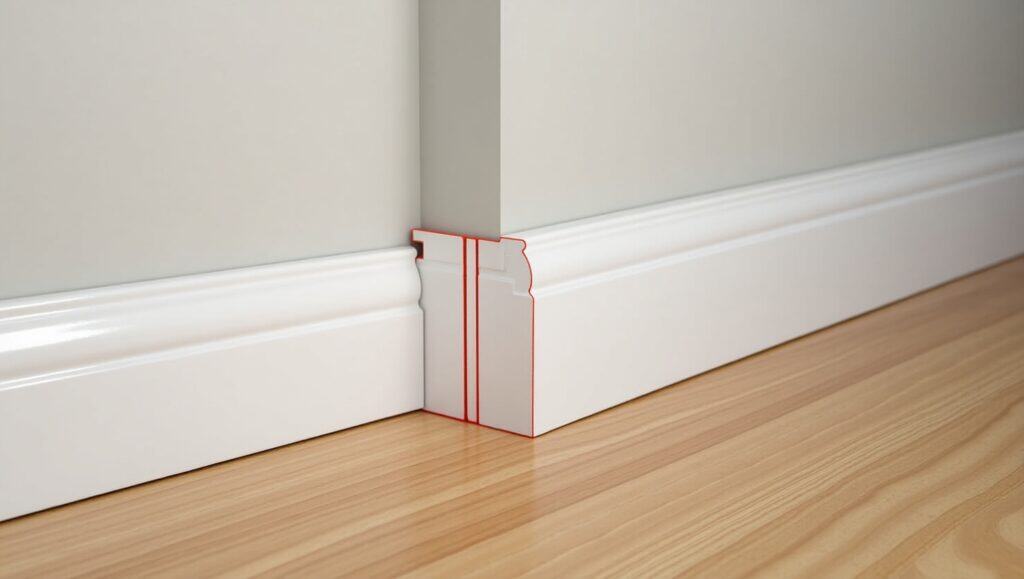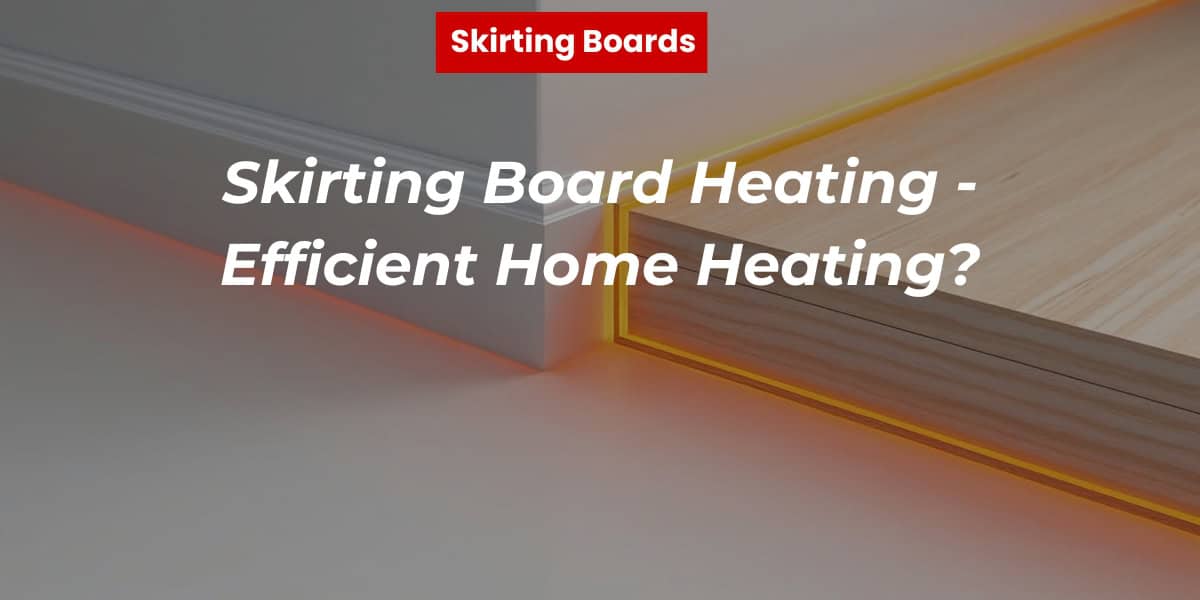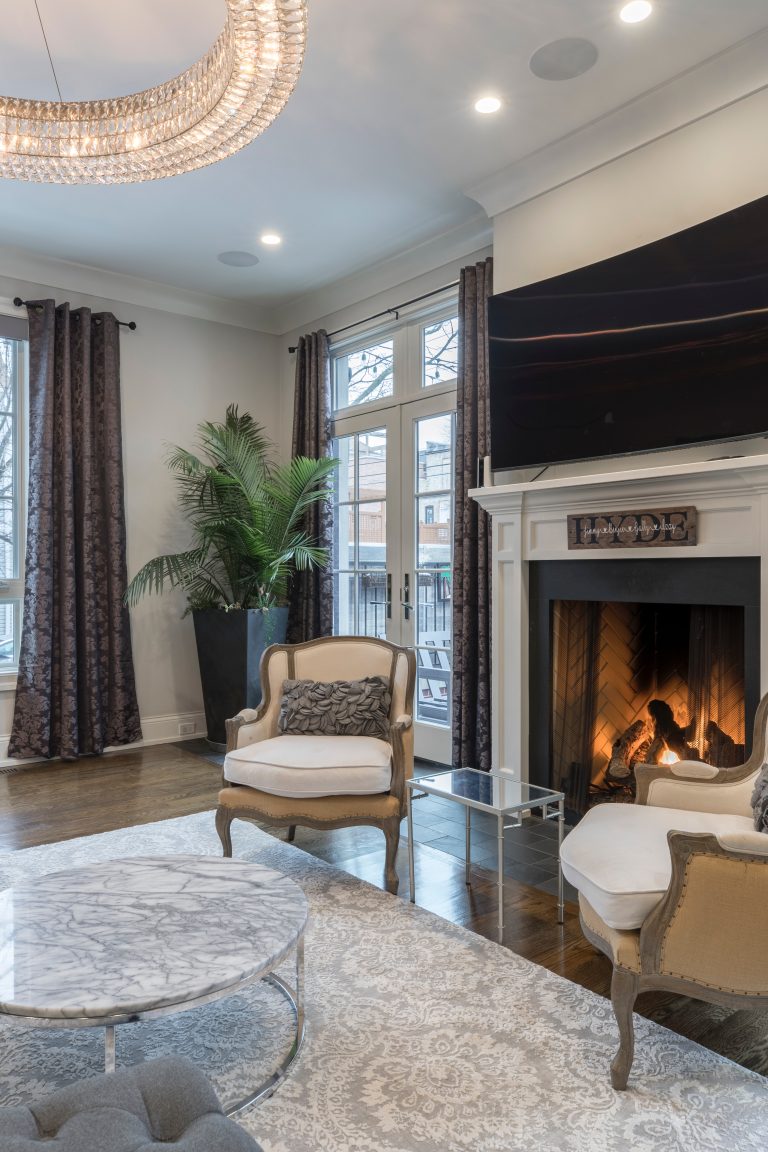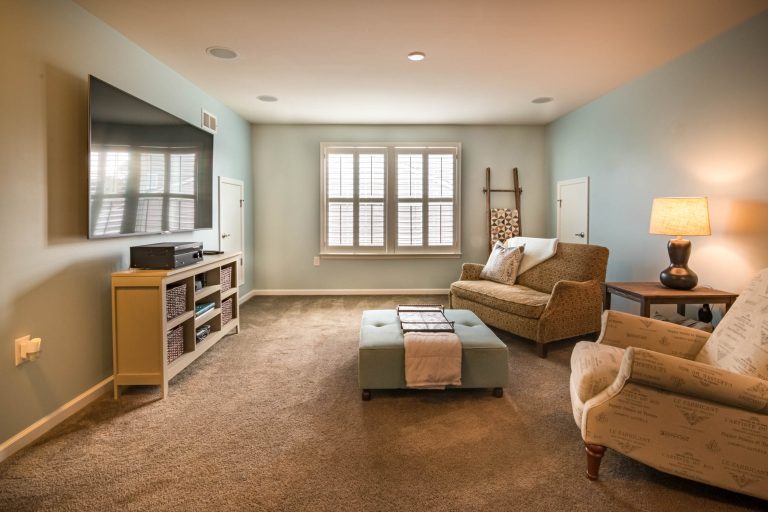Your basket is currently empty!
Skirting Board Heating: The Best Solution for Efficient Home Warmth
Skirting board heating is a cost-effective heating solution that provides radiant heat while freeing up wall space by eliminating the need for bulky radiators. It’s an ideal alternative for new builds, extensions, and renovations, offering real warmth fast with minimal maintenance.
But is skirting board heating expensive? How does it compare to traditional radiators or underfloor heating? This guide covers how skirting heating works, its benefits, and whether it’s the right choice for your home.

What is Skirting Board Heating?
Skirting board heating is a dual-functionality system that replaces standard skirting boards while discreetly heating your home. It works by integrating electrical heating elements or hot water pipes into robust powder-coated aluminium skirting panels, allowing for efficient heat distribution.
| Key Features of Skirting Board Heating |
|---|
| Provides targeted, even heating throughout a room. |
| Helps free up wall space by eliminating radiators. |
| Works with boilers, heat pumps, and renewable energy systems. |
| Suitable for large spaces, smaller spaces, and low-carbon homes. |
| Compatible with various floor coverings, including tiles, laminate, and carpet. |
| Offers a traditional skirting profile with pre-finished designs. |
Unlike underfloor heating, which requires curing time and major floor alterations, skirting board heating is a simple installation with little disturbance to your home.
Benefits of Skirting Board Heating
| Benefit | Why It Matters |
|---|---|
| Cost-effective heating solution | Uses less energy than radiators, reducing heating bills. |
| Minimal maintenance | Unlike designer radiators, skirting heating requires little upkeep. |
| Heats your home efficiently | Provides real warmth through radiant heat, preventing heat loss. |
| Free up wall space | Maximises room layout flexibility by removing the need for radiators. |
| Improves air quality | Reduces air movement, which can produce dust—ideal for healthcare environments. |
Types of Skirting Board Heaters
Skirting heating systems are available in electric, hydronic, and hybrid models, each offering different advantages.
| Type | Key Features | Best For |
|---|---|---|
| Electric Skirting Board Heating (Dry System) | Uses electrical heating elements to generate warmth. | Homes without central heating systems. |
| Hydronic Skirting Board Heating (Wet System) | Works with a boiler or heat pump, using hot water to heat robust powder-coated aluminium panels. | Energy-efficient heating for homes using renewable systems. |
| Hybrid Skirting Board Heating | Combines electric and hydronic heating, allowing a switch between energy sources. | Homes that need flexibility in energy use. |
These systems are available in pre-finished designs, making them ready to install with minimal maintenance.
How Skirting Board Heating Works
Skirting heating operates by warming aluminium radiant panels, which distribute gentle, even heat along the room’s perimeter.
- Hot water pipes (hydronic) or electric elements heat the powder-coated skirting panels.
- Radiant heat warms the room from the floor up, avoiding cold spots.
- Provides up to 180W per metre, making it a powerful and efficient heating option.
- Compatible with heat pumps, solar panels, and commercial HVAC products for greater energy efficiency.
Since heat rises, skirting board heating heats a room more effectively than traditional radiators, ensuring real warmth fast with less energy consumption.
Skirting Board Heating vs. Underfloor Heating
| Feature | Skirting Board Heating | Underfloor Heating |
|---|---|---|
| Installation Cost | Lower | Higher |
| Heating Efficiency | Targeted heating, avoiding heat loss | Even room-wide warmth |
| Floor Compatibility | Works with all floor coverings, including laminate and carpet | May require specific flooring |
| Installation Time | Quick and easy, with simple installation | Time-consuming, requiring curing time |
| Best for Retrofits? | Yes | No (requires floor alterations) |
Since skirting board heating is priced per linear metre, it is often cheaper to install than underfloor heating, which is priced per square metre.
Installing Skirting Board Heating
Installing skirting heating is easier than most central heating systems, making it a great option for DIY or professional installation.
Step-by-Step Installation Guide
- Plan the layout – Measure the wall space and consider room size and heat output requirements.
- Remove old skirting boards – Ensure the wall surface is smooth before installation.
- Secure the heating panels – Fix skirting board heating firmly to the walls using the following tools:
- Tape measure – To determine accurate panel lengths.
- Pipe and cable detector – To avoid drilling into electrical wiring.
- Pilot hole drill – For precise mounting.
- Lost head nails or adhesive – To attach skirting boards securely.
- Connect to the heating system – Wire the electrical heating elements or link the hydronic pipes to the boiler.
- Test the system – Ensure even heating before sealing and finishing.
Once installed, skirting heating blends into the home like a traditional skirting board while providing discreet, powerful heating.
Skirting Board Heating for Sustainable Homes
Skirting board heating is a sustainable product that integrates with low-carbon energy sources, reducing reliance on fossil fuels.
| Eco-Friendly Feature | Why It’s Important |
|---|---|
| Solar panel compatibility | Uses renewable energy for electrical heating. |
| Works with heat pumps | Maximises efficiency in hydronic systems. |
| Smart thermostat integration | Allows precise temperature control, lowering energy use. |
Many award-winning companies in the UK recommend skirting heating as a home energy solution that provides greater efficiency in sustainable housing developments.
Frequently Asked Questions (FAQs)
1. How does a skirting board heating system work?
A skirting board heating system replaces regular skirting boards with slim, energy-efficient heating panels that distribute heat evenly along the base of walls. It works using either electric heating elements or hot water pipes to warm up durable epoxy powder-coated aluminium panels, which then radiate heat throughout the room. This method provides consistent warmth while reducing energy costs compared to traditional radiators.
2. Do skirting board heating systems help save wall and floor space?
Yes! One of the biggest advantages of board heating systems is their space-saving design. Unlike bulky radiators that take up valuable wall space, skirting heating is discreet and sits along the base of walls, allowing homeowners to free up wall and floor space for furniture and décor. This makes it an excellent choice for smaller homes, new builds, and modern interiors.
3. Is electric heating in skirting boards energy-efficient?
Yes, electric heating skirting boards can be a cost-effective heating solution when used efficiently. Because they distribute heat evenly along the entire perimeter of a room, they avoid heat loss that occurs with traditional radiators. Many modern electric skirting board heating systems are designed to work with smart thermostats, helping to lower energy bills by maintaining consistent temperatures without excessive power consumption.
4. Can I install skirting board heating while laying floor coverings?
Absolutely! One of the benefits of skirting board heating systems is that they don’t interfere with laying floor coverings like carpet, laminate, or tiles. Unlike underfloor heating, which requires subfloor modifications, skirting heating is installed directly onto the wall, making it quick and easy to integrate into any home—whether you’re renovating or building a new property.
5. What is a removable top gasket, and why is it important in skirting heating?
A removable top gasket is a seal used in some skirting board heating systems to prevent heat loss and ensure efficient heat distribution. It helps create an airtight fit between the skirting panel and the wall, maximising energy efficiency. This small feature makes a big difference in maintaining consistent room temperatures and reducing energy costs over time.
Final Thoughts: Should You Install Skirting Board Heating?
If you’re looking to heat your home efficiently while freeing up wall space, skirting board heating is an excellent alternative to radiators and underfloor heating.
✔ Energy-efficient – Uses less energy while delivering real warmth fast.
✔ Discreet design – Works like a traditional skirting board, enhancing overall appearance.
✔ Compatible with renewable energy – Works with heat pumps and solar panels.
✔ Simple installation – Can be installed by one tradesman with little disturbance.
While skirting board heating is expensive upfront, it provides long-term savings by reducing heat loss and improving home energy efficiency.
Would you like recommendations on the best brands for skirting board heating in the UK or tips on choosing between electric and hydronic systems? Let us know, and we’ll be happy to help!







